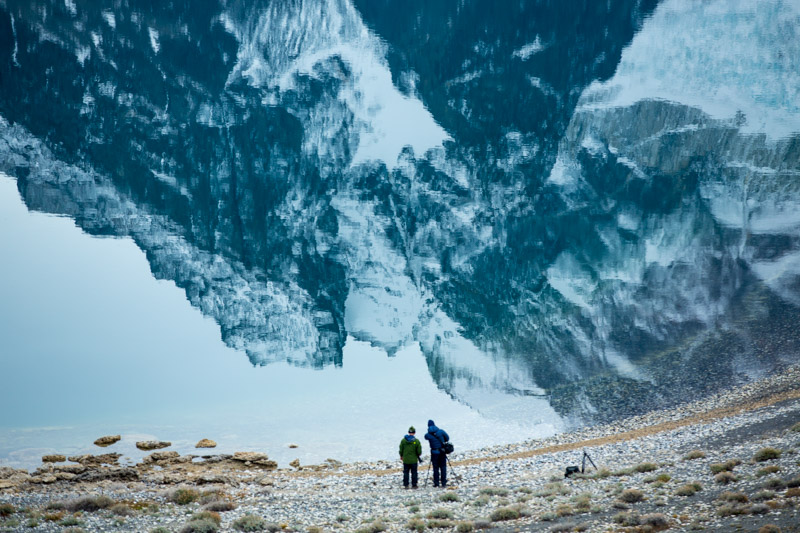I made this photo of Stac Pollaidh (pronounced Stack Polly) last October during an exceptionally windy day. I've known of this location at the end of the loch for some time, having first spotted it many years ago on a week long workshop with a group. I was drawn to the criss-crossed lines in the foreground rock, and knew that if I could be here when the conditions were right, then I might get what I envisaged in my mind's eye.
I've stuck with the same film type for years now because I love it, and because I know it well. You could say this is part of my structured approach to creativity.
I've found over the years of repeatedly going back to places, I learn how the landscape works. I begin to understand where the light is coming from and where to be at sunrise and sunset, but I also get to know some of the more intimate details of the locations I visit - the criss-crossed features of the foreground rocks in the above picture is a perfect example of that.
Continuing from my previous post, I think it's important to keep things fluid. I love to go for a wander and to find things by chance, or to encounter something where there was no pre-visualisation involved. It's very freeing to work with what you're given. But there is also value in researching places and building up knowledge of locations too. I like both approaches and tend to move between fluid and fixed states all the time.
I think my personality has dual sides: in some ways I prefer to be structured while in others I prefer to be fluid. For example, i'm very structured with my technical process. I've used the same film stock for many years now, and I never deviate from it. I am also very wary of changing even the smallest of things in my workflow, because I believe it could have far reaching consequences that I'm unable to comprehend until much later. But I also like to be very fluid - I prefer not to pre-visualise a scene, often going for what feels right at the time. This is not just in what I choose to shoot while on location, but also in how I edit the work. I like to keep an open mind in this regard as I may find later when I come to review the photographs that I see something different or new in them.
So I think to be creative, we need to be able to move between these two states of being fluid and fixed. Being fluid allows us to find new things and find inspiration, while being fixed allows us to shape them - to give our ideas structure and to see them through to completion.
The skill however, is in knowing which state to be in, and when :-)
I like to try out my shots in black and white sometimes. They may be better in monochrome, but even if they aren't, I maybe notice new things about the image when viewed with the colour removed. It allows me to free up what I'm doing and I think this is perhaps a fluid aspect to my creativity.















